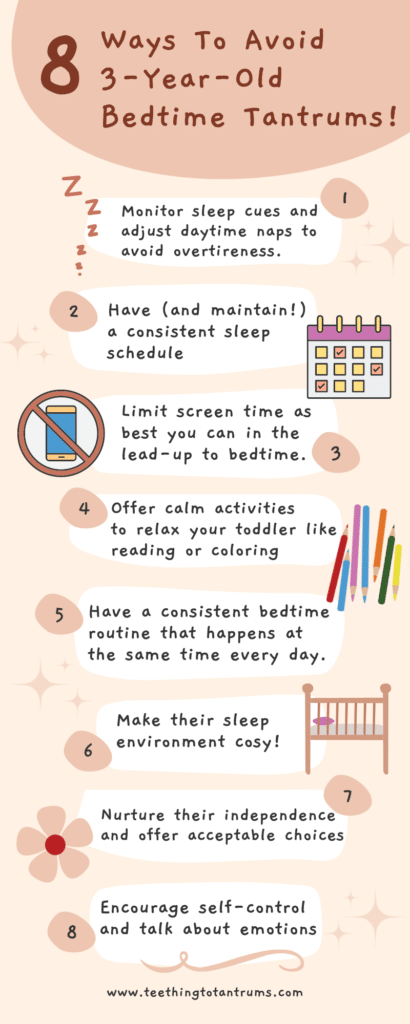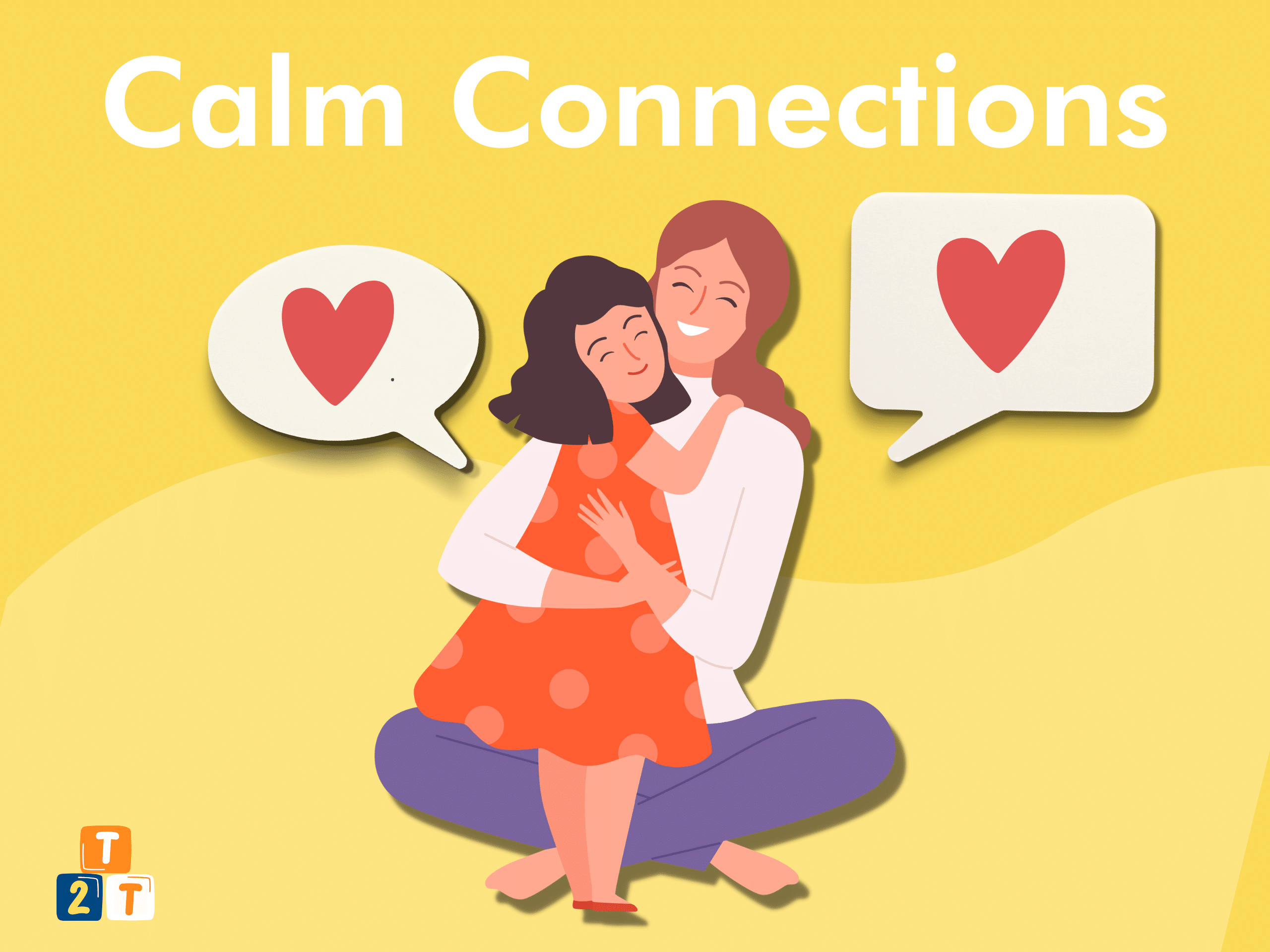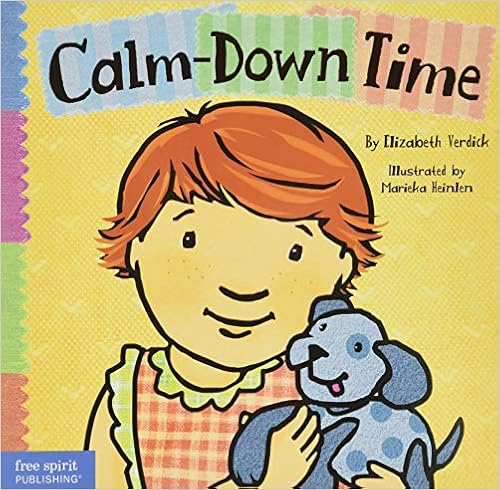At the end of a busy day, the last thing you need is a screaming toddler who will not go to bed. It’s frustrating and exhausting. But here’s everything you need to know about 3 year old bedtime tantrums so we can stop these power struggles and get on the path to calm and peaceful evenings once again.

Understanding 3 Year Old Bedtime Tantrums
Bedtime tantrums in 3-year-olds are usually your child’s tired way of expressing themselves at the end of a busy day. Usually, they are a result of overtiredness, overstimulation and big feelings. But to address them effectively, we must identify the exact cause of the3 year old bedtime tantrum.
Causes Of 3 Year Old Bedtime Tantrums
Whilst overtiredness, overstimulation and big emotions are the main causes of bedtime temper tantrums, they’re certainly not the only reasons why your toddler is upset.
Here are the most common triggers of 3 year old bedtime tantrums:
- Overtiredness: Your little one could very well be exhausted from their day, feeling irritable, and moody and unable to fall asleep easily, leading to bedtime tantrums. Ensuring sufficient rest and quiet time in a calm-down corner during the day can help reduce these outbursts.
- Not being tired enough: Sometimes, your child may not be tired enough at bedtime, making it difficult for them to settle down. Whilst this is a tricky balance to find, following a consistent daily routine and ensuring they get outside every day can help regulate their sleep pattern.
- Emerging independence: At this age, children are striving for independence and may resist bedtime routines as a way to assert control. Offer acceptable choices to balance their need for independence with your boundaries.
- Overstimulation: Too much excitement or stimulation close to bedtime can make it hard for your preschooler to unwind and fall asleep. Establish a calming bedtime routine that relaxes your child and excludes screens.
- Transition and changed environment: Moving to a new home, starting school, the arrival of a sibling or any significant change in their routine can trigger bedtime tantrums. Offering comfort and reassurance during these transitions can help them cope better.
- Developmental milestones: Your 3-year-old may be experiencing developmental milestones that cause them to become overtired, anxious or stressed, leading to temper tantrums at bedtime. They may also struggle to express their emotions verbally, making tantrums a means to vent their frustrations.
- Fear and anxiety: If your little one is experiencing separation anxiety, fear of the dark or monsters under the bed this can easily result in bedtime tantrums. Try to identify the cause and then address it with sympathy and caring support.
- Hunger: If your little one is hungry, they may be irritable and may have difficulty falling asleep. Ensure they have a filling and healthy meal in the evening. Some 3 year olds may need a healthy bedtime snack to settle them. I love the recipe and snack ideas from the lovely Sarah Bushell at The Children’s Nutritionist.
- ADHD: Children with ADHD may also have difficulties falling asleep, which can manifest as toddler bedtime tantrums because they don’t want to stop yet. Consult with a healthcare professional if you suspect your child may have ADHD.
- Uncomfortable sleep environment: A too hot or too cold room, tight or itchy clothing, or an uncomfortable bed can easily cause bedtime tantrums if your 3 year old cannot effectively communicate what they’re feeling. Creating a comfortable sleep environment is essential to encourage a peaceful night’s sleep.
Want to stop your children from yelling, shouting & throwing tantrums... Whilst helping them listen to you and building a healthy strong relationship? Look no further than Calm Connections and transform your family’s life for years to come.
- Understand the best way to communicate with your child in different situations, so you feel more confident, relaxed, and in control... even during the most challenging moments. 💖
- Learn how to set clear boundaries and engage your child's cooperation 🌟
- Break free from tantrum cycles and promote healthy alternatives (without using punishment) 🎉
- Learn my trade secrets (collected over 40+ years in the childcare industry) to get your child to listen to you without shouting 🙌
- Promote kindness and honesty to prioritize a respectful relationship with your child ❤️
How To Avoid 3 Year Old Bedtime Tantrums
It’s challenging dealing with 3-year-old bedtime tantrums, but with a few strategies, you can create a more peaceful evening routine.
Below are a few suggestions to help prevent toddler bedtime battles:

1. Understand Nap Transitions
As your 3-year-old grows, their nap schedule may change as they start to drop their daytime nap.
To prevent toddler tantrums, monitor their sleeping patterns and watch out for sleep cues such as eye rubbing, yawning and becoming withdrawn to make sure they don’t become overtired.
NOTE: Even a short nap time in the afternoon for 30 minutes can help tie them over until bedtime. Just make sure they’re not sleeping for too long or too close to bedtime. Your toddler should be awake for around 3 hours before bed.
2. Have A Sleep Schedule
Establish a consistent sleep schedule which includes maintaining regular bedtime and wake-up time. This helps your little one’s body adjust to a routine, and they’ll be more prepared for bedtime.
Sometimes you may need to gradually move to an earlier bedtime to help prevent overtiredness, but do so by 10-15 minutes per night until you’re toddler is falling asleep at the correct bedtime. Here is my breakdown of an ideal 3 year old sleep schedule.
MELLA is the #1 most backed kid's clock and all-in-one Ready to Rise children's sleep trainer designed to keep your kid in bed longer. MELLA is a sleep trainer, alarm clock, sleep sounds machine, night light and nap timer rolled into one adorable package!
Studies show that children do not fully understand the concept of time until around 8 years old, so MELLA uses colours and facial expressions to teach your kid when it's time for bed and when it's okay to wake up. With MELLA, your kid can learn to stay in bed longer, giving you more sleep!
3. No Screentime
I know this may seem extreme, but I will stand this ground for as long as I have to!
Too much screen time in the lead-up to bedtime has been proven to have a detrimental effect on young children’s ability to fall asleep and stay asleep as the blue light inhibits melatonin production leading to sleep disruptions.
Instead, engage them in calming activities, such as reading or drawing, to help them wind down.
4. Offer Calm Activities
Introduce calm and soothing activities before bedtime, like having a warm bath or reading relaxing bedtime stories. These activities help your child relax and build strong sleep associations that it’s time to sleep.
5. Maintain A Consistent Routine
Create a consistent bedtime routine for your child to follow at the same time every night.
This should include a warm bath, brushing teeth, putting on pyjamas, and reading a book.
You can add in tasks such as extra toilet breaks, having a drink of water, and putting teddy to bed.
But consistency is king with parenting so make sure the basic framework of your evening routine stays the same and happens at the same time every night.
NOTE: Using a bedtime routine chart can help a lot for this age range. Check out my bedtime routine post to download my chart and learn how to use it to its full potential.
6. Make Their Sleep Environment Cosy
Ensure your child’s sleep environment is comfortable, quiet, and dark. Consider using blackout curtains or a white noise machine to block out light and noise that could disturb their sleep.
Their room should be between 65°F to 70°F (8°C to 22°C) and they should be dressed in seasonally appropriate sleepwear.
Maintaining a good sleep routine with your baby can be tricky, especially through changing seasons or when you’re away from home! This beautiful blackout blind from Tommee Tippee is made from lightweight premium fabric and completely blocks out daylight, helping to create a dark and sleepy space for baby, no matter where you are!
7. Nurture Their Independence
Promote your child’s independence by giving them two acceptable age-appropriate choices, like selecting their pyjamas or deciding which book to read.
This simple choice can help them feel more in control and less resistant at bedtime.
8. Encourage Self-Control
Help your little one learn how to manage their emotions and develop self-control during the day as this can go a long way in helping them handle the transitions and changes happening during bedtime.
For example, practise teddy bear breathing and talk about emotions with flashcards.
By incorporating these strategies into your child’s day and bedtime routine, you’ll be better equipped to avoid tantrums and create a more peaceful, restful sleep environment for your 3-year-old.
Bedtime Routine To Avoid Tantrums
As I mentioned earlier, establishing a consistent bedtime routine is crucial in helping your 3-year-old avoid bedtime tantrums.
A daily pattern will help your little one know what to expect, which can reduce anxiety and stress which can often lead to tantrums.
To really nail the bedtime routine do the following:
- Start the run-up to bedtime after the last meal of the day with some quiet play before bath time.
- Handle transitions calmly and with plenty of warnings by letting them know that the bedtime routine is coming up.
- Include a warm bath and reading a book in the routine as this will signal to your child that it’s time for sleep and make the transition to bedtime smoother.
- It is essential that you remain present throughout the whole process and do not become distracted by looking at your phone or doing other chores.
- Avoid screen time close to bedtime, as it can negatively impact your child’s sleep. Encourage quiet activities like coloring or puzzles instead.
- Finally, be patient and understanding. Changes in sleep patterns may take time, but consistency and a supportive routine can lead to improved bedtime experiences and reduced tantrums.
Looking to get your little one to sleep quickly and effortlessly through a healthy nighttime routine? Check out my Bedtime and Nap Cheat Sheet and master the art of making daytime naps and bedtimes as seamless as possible.
A bedtime & nap cheat sheet so good your little one will ask you to put them to bed...
Laura Williams "This is a life saver! I'm so glad I downloaded your bedtime & nap cheat sheet. My little one actually asked me to put him to bed last night! Unbelievable! Thank you so much!"
Click Here For The FREE Cheat Sheet
Identifying and Managing Anxiety To Reduce Bedtime Tantrums
It’s essential to understand that anxiety is a common factor in 3 year old bedtime tantrums.
Separation anxiety, for instance, can make your child feel worried about being left in their room alone and recognising and empathising with their fears will make it easier to address the issue.
One effective strategy for managing anxiety is to develop calming rituals to help ease your child’s anxiety.
By establishing consistent, predictable, and enjoyable evening routines, you can help reduce 3 year old bedtime tantrums as they will know what to expect and feel a lot safer in a consistent and recognisable routine.
Additionally, offering a comfort item, such as a favorite stuffed animal or blanket, can provide reassurance for your child.
Another important aspect of reducing toddler bedtime tantrums is addressing any potential fears your child may have. This could include fear of the dark, monsters, or other imagined threats. Night lights are ideal to help alleviate these worries.
Finding the right night light for your child can be quite a task. You want something safe, comforting, and practical. The Cozy Starry Night Light ticks these boxes, with eye-friendly warm lighting and an easy-to-use dimmer.
Its gentle glow makes it the best night light for feeding baby, diaper changes, or comforting your little one back to sleep.
As your baby grows the Cozy Starry Night Light's starry sky projection can provide comfort and gentle quiet time stimulation. Its soft lighting ensures a dreamy, peaceful environment, supporting your baby’s natural sleep cycle.
It really is a fantastic nightlight (at a very reasonable price!)
- Eye-friendly warm lighting with adjustable brightness.
- Includes a timer function for convenience.
- Projects a starry sky that is soothing for little ones.
- Rechargeable battery, so it's very portable.
- A USB adapter is not included for charging.
- The star projector is static without motion (however, this is ideal for very young babies and toddlers).
- Battery life varies based on the brightness settings.
I also like to create a monster spray to help with fears of the dark and monsters.
Simply fill a spray bottle with water and a handful of beads and sequins and spray it around the room to eliminate any hidden monsters.
You can also add a few drops of lavender, camomile or cedarwood essential oil to strengthen the illusion. This may create a strong sleep association too.
Reading books together about their fears and concerns can also help.
From the fear of the dark to starting daycare or the arrival of a new sibling, there are books out there that can help you communicate with your 3 year old about what might be causing their bedtime tantrums.
Here are a few of my favourites:
- Franklin in the Dark By Paulette Bourgeois
- You’re the Biggest By Lucy Tapper and Steve Wilson
- Bye Bye Time By Elizabeth Verdick
- The Berenstain Bears’ Moving Day By Stan Berenstain
- The Owl Who Was Afraid Of The Dark By Jill Tomlinson
REMEMBER: Focus on creating a positive and supportive environment, and be mindful of your child’s emotional well-being. Always encourage open communication, validate their feelings, and ensure they understand that their fears are acknowledged and respected.
Frequently Asked Questions About 3 Year Old Bedtime Tantrums?
Looking for more information about why your 3 year old is throwing tantrums at bedtime? Here are the answers to the most commonly asked questions.
Why Does My 3 Year Old Only Throw Tantrums At Bedtime?
Your 3-year-old may throw tantrums at bedtime due to various reasons, such as anxiety, discomfort, or fear. Overstimulation, overtiredness, and resisting change in routine are also common causes of toddler bedtime tantrums. Addressing these issues can help prevent toddler bedtime battles.
How Much Sleep Does My 3 Year Old Need?
Preschool-aged children need about 11 to 13 hours of sleep a day, which can include nap time. An overtired toddler will struggle to settle so adequate daytime sleep can most definitely help prevent irritability and tantrums at bedtime.
Is It Normal For A 3 Year Old To Fight Bedtime?
Yes, it’s normal for a 3-year-old to fight bedtime occasionally. This can be due to their growing independence, changes in daily schedule, or difficulty falling asleep. Developing a consistent bedtime routine and ensuring a calm, comfortable sleeping environment can help.
What Time Should A 3 Year Old Go To Bed?
The ideal bedtime for a 3-year-old may vary depending on the child’s specific needs. Generally, most 3-year-olds need 10-13 hours of sleep per night. I would recommend a bedtime between 7 and 8 pm.
Your child should not be in bed any later than 8pm to ensure they get enough sleep to support their brain’s growth and development as well as their physical development.
Are There Specific Techniques To Soothe Nighttime Anxiety In Toddlers?
To soothe nighttime anxiety in toddlers, establish a consistent bedtime routine, provide comfort items such as a stuffed toy, use nightlights, and audio tapes and offer reassurance. A calm, soothing atmosphere is important for easing your child’s anxiety at bedtime.
When Should I Seek Professional Help For My Toddler’s Bedtime Tantrums?
Seek professional help for your 3 year old’s bedtime tantrums if they persist despite trying strategies to address the issue if they’re causing severe stress, or if they are affecting your child’s overall well-being, sleep quality, or functioning. A pediatrician or mental health professional can provide guidance for managing these issues.
Further Reading
To learn more about how to handle and reduce tantrums in toddlers and preschoolers, no matter the situation, read these posts:
Need More Parenting Help?
- Download our FREE Bedtime & Nap Sleep Cheat Sheet. It’s a free, easy-to-use and proven formula designed for parents of 0-5 year olds to master the art of consistently undisturbed and restful sleep without the yelling, nagging or exhausting long-winded evenings.
- Check out our Parenting Toolbox. You’ll get access to expertly-chosen products that you can guarantee are the best for your little one and your wallet.
- Are you looking for personalized guidance to navigate the challenges of parenting? I offer 1-on-1 consultations to bring you tailored strategies and actionable advice to help support your child's growth and well-being with confidence.

A bedtime & nap cheat sheet so good your little one will ask you to put them to bed...
Laura Williams "This is a life saver! I'm so glad I downloaded your bedtime & nap cheat sheet. My little one actually asked me to put him to bed last night! Unbelievable! Thank you so much!"
Click Here For The FREE Cheat Sheet








